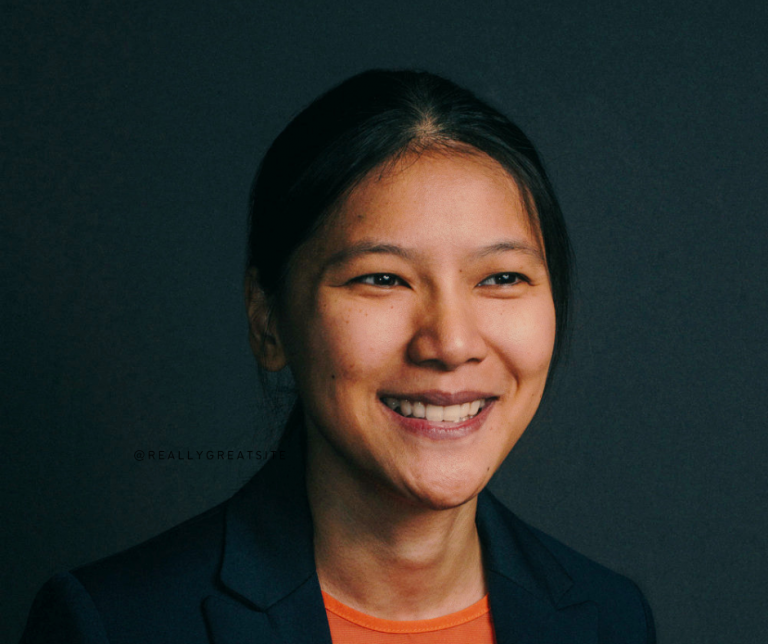Motivated by a lack of role models, astrophysicist Reina Reyes uses storytelling to bring science to life.
As a young girl in suburban Manilla, Reina Reyes struggled to imagine herself as a scientist. She recalls flipping through a popular local children’s magazine and seeing profiles of prominent researchers – people who were much older than her, decked out in formal academic hats and gowns.
“They were ‘national scientists’, feted because of their lifelong work and achievement,” says Reyes. “But when you’re young, you don’t really know about that, right?”
Reyes thought she didn’t look like a scientist. How, then, could she hope to become one?
Determined to follow her passions, Reyes attended a specialty science high school in the Philippines, where she connected with fellow “geeks” who shared her love for the natural world. Her family encouraged her love of planets and stars, surprising her with a trip to the Hong Kong Science Museum.
“They had a nice planetarium show, and in the gift shop you could buy the freeze-dried ice cream that they take into space,” Reyes recalls. “I said, ‘I want this ice cream!’ and my dad bought it for me. He was always supportive in that way.”
Fast-forward to today, and Reyes is an Associate Professor at the National Institute of Physics at the University of the Philippines. In 2020, she founded the Data and Computation Research subgroup, which conducts data-driven research in astronomy, as well as investigating machine-learning applications for social good, including poverty mapping and ‘fake news’ detection.
Highly engaged with the public via social media, television appearances and her Pinoy Scientists blog, which celebrates the work of Filipino researchers, Reyes had become the kind of role model that her younger self would have loved to see.
A test for Einstein
Reyes has travelled the world in pursuit of her education. Having studied for an undergraduate science degree at Ateneo de Manila University in the Philippines, she completed a graduate diploma in high-energy physics at the International Centre for Theoretical Physics in Trieste, Italy. In 2006, she relocated to the United States to complete a PhD in astrophysics at Princeton University.
Joining one of the most prestigious university campuses in the world was intimidating, she concedes, but the support structure there “made it easy to be good”, especially in a tiny cohort of just four students who were working towards a PhD in astrophysics.
In 2011, one of Reyes’ PhD projects made international headlines by putting Einstein’s General Theory of Relativity through a complex test. Using new data and techniques to study an estimated 70,000 galaxies, Reyes and her team showed that they were clustered as Einstein predicted they would be more than 100 years earlier. The findings were published in Nature.
“It’s a specific example of how, in science, there should be tests or empirical evidence for any theory,” says Reyes.
In 2014, Reyes returned to Manila, where she found an encouraging surge in community engagement in science, in part driven by the new Mind Museum, a concept science museum with themed galleries dedicated to atoms, life, Earth, the Universe and technology. She spent several years in corporate data-science roles before returning to academia, splitting her time between teaching, research and hosting a local children’s television show, Science Says.
Reyes says teaching and community outreach afford her chance to champion something that she feels is under-appreciated: the joy in science.
“That’s the beauty of it, right? For me, it’s surprising that people take the joy out of it. I’m puzzled by that!” she says. “There’s joy in discovery. When a child just watches a butterfly, there’s joy in that. Then you get more serious [as an adult] and you’re not that curious anymore.”
Making the case for science
Parallel to Reyes’ academic priorities is a commitment to communicating to the public what it truly means to work as a researcher.
The Pinoy Scientists blog was initially less about encouraging the next generation of scientists and more a remedy for loneliness. A post-doctoral student in Chicago after completing her PhD, she hadn’t been home for eight years.
“I was getting homesick there in the harsh winters,” says Reyes. “That was part of it; I was reaching out to other Filipino scientists. When I got back to the Philippines, I continued, because I could do more profiles and networking to create impact.”
Pinoy Scientists shows that there are many paths for a person who wants to forge a career in science. “We profile scientists who failed in math, worked hard and overcame it to become scientists. Even Einstein struggled in math – although that’s really just a story [we tell] to make us feel better!”
Support from parents is particularly important for students in the Philippines, says Reyes, who hopes her outreach will encourage families to see science as a worthwhile pursuit.
“We tell parents that you can live a fulfilling life as a scientist,” she says. “We’re not millionaires, but we do have decent professional lives, enjoy what we do and are part of a valuable community.”
Reyes knows message is getting through: she hears it first-hand.
“Students tell me that I spoke about astronomy or science as a career at their high school,” she says. “Now they’re in in college, and when they find out that I’m teaching, they want to join my group. Another five or ten years into the cycle, I’ll be saying ‘We want to feature you in Pinoy Scientists.’ I’m reaping the seeds I planted.”
Story by Michelle Fincke


Comments are closed.